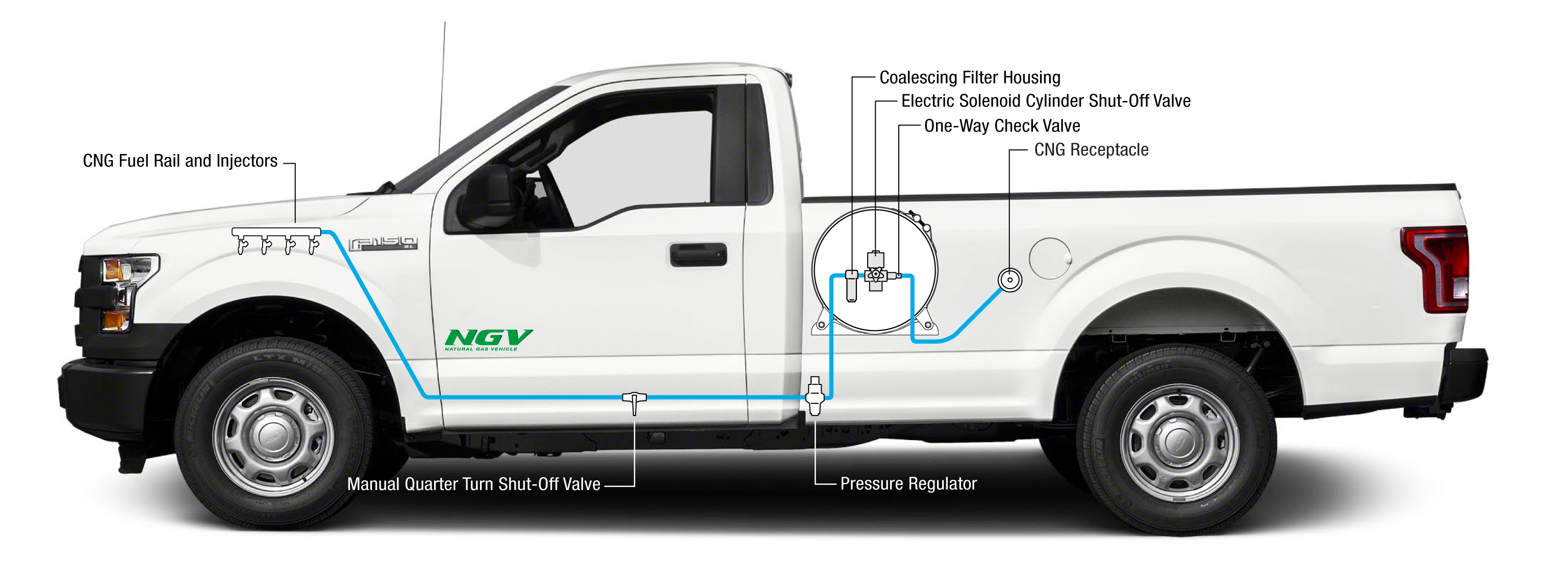
How a CNG Vehicle Works
1.) CNG is compressed to 3600 psi and enters the vehicle through the CNG fill receptacle.
2.) It flows into high-pressure cylinders located in or under the vehicle.
3.) For a bi-fuel NGV, a fuel selector on the dash permits selection of CNG or gasoline. A dedicated NGV operates solely on CNG.
4.) When needed the CNG leaves the cylinders and passes through the (PRD) pressure relief device and electric solnenoid shut-off valve (Which stops the flow of CNG when the engine is not running or in the case of a bi-fuel vehicle, gasoline is selected).
5.) The CNG travels through a short high-pressure fuel line and enters a (10 micron) coalescent filter, which removes aeresol compressor oil droplets and other contaminates from the CNG.
6.) The CNG now enters the pressure regulator, which reduces pressure from up to 3,600 psi to approximately 70 - 125 psi.
7.) The CNG flows through a low pressure fuel line and enters the fuel rail which supplies pressurized fuel to all of the specially designed CNG fuel injectors.
8.) The CNG injectors inject the CNG into the engine's intake valve.
9.) The ECM (electronic control module) controls the sequential multi-port fuel injection pulse widths or amount of CNG the injectors inject into the engine. This system allows each injector to open just before the intake valve opens, instead of all injectors opening all at once.